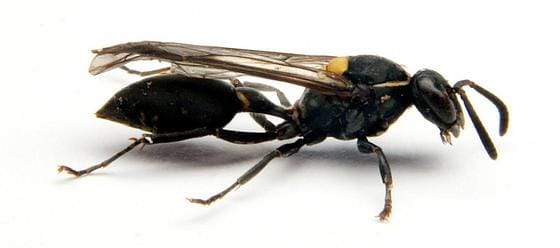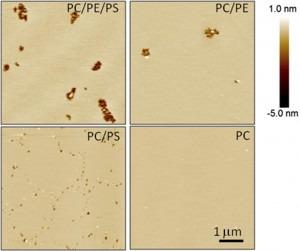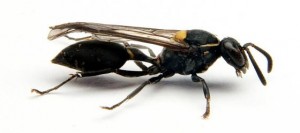Toxin from Wasp Venom Selectively Kills Cancer Cells

A brazilian wasp called Polybia paulista produces a toxin, MP1, that targets only cancer cells while leaving healthy cells intact. The toxin, secreted with the wasp´s venom, had been studied previously, but its mechanism of action was unknown. Now, scientists from the University of Leeds and the State University of Sao Paulo have shown that the molecule attacks the particular disposition of lipids in the membranes of cancer cells. The study has been published in Biophysical Journal.

AFM images showing the bigger size of the holes in membranes that contain PE. From: http://www.cell.com/biophysj/abstract/S0006-3495(15)00768-7
In healthy cells, phospholipids like phosphatidylserine (PS) and phosphatidylethanolamine (PE) are found in high amounts in the inner layer of the cytoplasmic membrane. However, in cancer cells, PS and PE are in the outer layer, exposed to the extracellular medium. The researchers decided to test the effects of PS and PE distribution in the lipid bilayer. They constructed different model membranes and came to the conclusion that PS and PE are detrimental to the cell when exposed to the extracellular space. PS increases the binding of MP1 to the cell by a factor of 7 to 8. MP1 interacts with the atypically placed fatty acids and pierces the membrane with tiny holes. The cell loses important molecules like RNAs and protein machinery through the holes, ceasing to function properly. PE increases the size of the holes poked by MP1 in the membrane by a factor of 20 to 30.
MP1 could be the first molecule of a new type of anticancer therapy based on attacking membrane lipids. It could be used in combination with other techniques to fight cancer.

